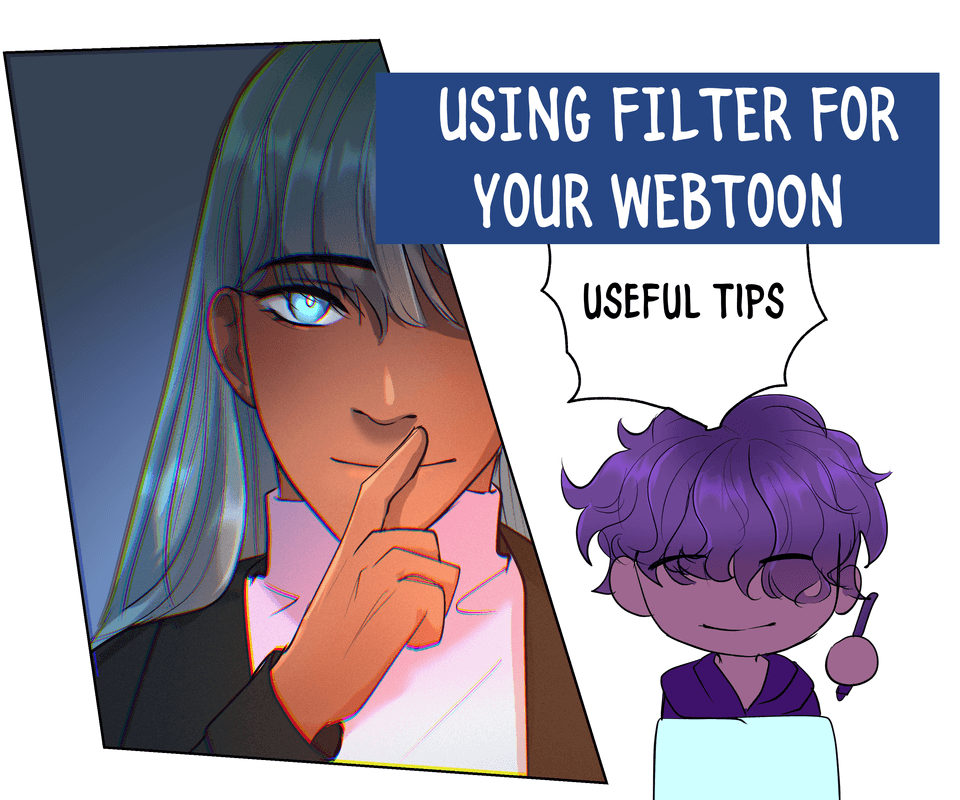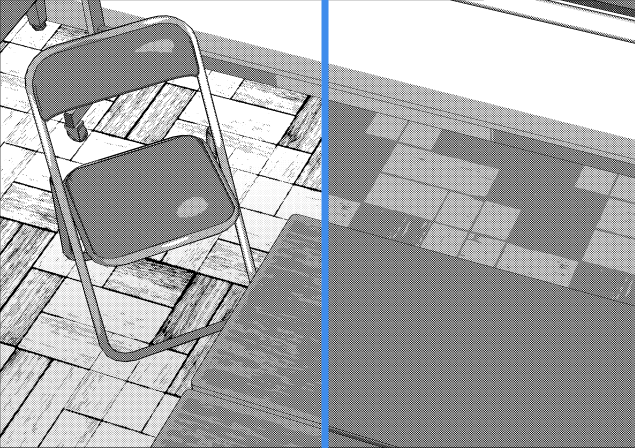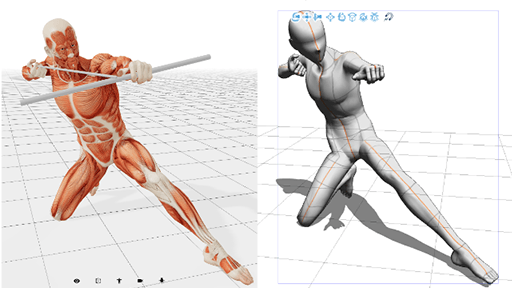Draw a fantasy animal in a realistic style.
Hi guys!
I'm Simona,
In my work, I'm often asked to create realistic illustrations of animals and fantastic creatures.
In this tutorial, I will explain how I proceed in my basic image processing of the subject until you get the color with texture effects.
Follow my tutorial but try to find your way, experienced brushes and techniques... the results will amazing!
First step:
Picture of the subject with black lines.
Decide what size to work, the definition that advice is 300 dpi.
the basic image is in PNG with a transparent background.
Always duplicate the base level, block it and make it invisible.
The background will be white for now.
With the "auto select-W" tool select the different parts of the animal and with the "airbrush-soft" tool define the volumes of the shapes.
Remember to decide in which direction the light comes,
if it comes from the top left the shadows will be on the bottom right.
Make a level for the body, a level for the face.
In the step after, you must duplicate the "body" and "face" levels, using "blending mode" "Multiply", you will have much darker tones.
Using the "erase" "soft" tool, gently erase the darker parts of the "multiply" levels.
This step is useful for giving a three-dimensional effect to the animal's shape.
If you are uncertain about the animal's physiognomy, help yourself with a pic of real animals.
This animal is a cross between a lemur and a raccoon!
Do u remember the layer with the basic black lines you duplicated at the beginning!
Very well!
Unlock it select it and give a fill "Fill" with a medium tone of color, I used a light brown.
Bring this layer above the black line level.
Erase the parts that you want to keep the black, as the eyes and nose.
Create a new layer to color the face with the fur effect.
What brushes did I use for the fur effect? just one as you see in the image.
Choose a few shades for the fur, two or three are enough to create the fur effect base.
Start with the darkest to the lightest one.
The inside of the ears of the animal has a rose-tone.
The part between the eyes up to the nose is lighter.
Even the part of the mouth is clear, almost white.
The hair on his chest is clear and brush strokes they must be wide is fluid to give a massive effect.
At this point in the work, it 's very important to change the background color to "black".
It will be easy to see and eliminate brushstrokes that only create confusion in the illustration.
I advise you to check the cleaning of the color often, if the final illustration must be in PNG
with a transparent background, there should be no unwanted "dirty" !!!
Another important task is to reduce the number of levels using the "combine to layer below the instrument", in this way, the work with the levels will be more agile.
Very good guys!
We are at a good point!
The eyes and nose are very important in the illustration of an animal. To color, the eyes choose a base color, such as a warm yellow.
Use the "color setting" tool starting from the color chosen.
The tonal scale will help you choose the shades of the part of the eye's iris.
Blend the lower part of the iris with a light yellow tone and the upper part with a darker tone.
With the "darker pencil" tool you draw small strokes around the pupil.
Use the same method for the nose, with a pink-brown color.
Let's change the brush!
Now that your pet has hair, you need to look realistic by adding more defined hair.
Use a brush with a fine line and shaded ends.
I added more black land defined hair around the eye area.
In the area of the inner ears used a dark brown color.
I added clear-white hair on the face and around the mouth.
If you want to give the fur a more realistic look
create small spots with a warm gray tone, on the back on the part of the forehead, the thighs and a few on the legs.
With the "thin line" with the white color overlap the small dark spots, light white hairs, you will get a very realistic effect.
Add light white hair in all parts of the animal to highlight the shiny effect.
On the ends of the tail, of the legs, I added light and brown hair that was light, long and messy.
Your furry hasn't just come from a hairdresser!
Let's go back to the eyes.
Look at my image.
Darkened with black the pupil part, then with the "air brush" tool, you create a small shade, very light, horizontal to create the volumetric effect of the eye.
Add small white dots in the same position for both the right eye and the left eye.
The claws in animals are made of hard, horny material.
Create a black base, then fade in a brown tone and add streaks, white and dark.
I used a brush "Flame" medium density to create the streaks.
Look at my sample.
We are here.
The furry fantasy has become a cute pet!
Before finishing the illustration, check the shadows and lights,
you can use the "volume" level to add darker or lighter shades.
In this illustration, I colored the branch with a brown base and then added the realistic details with a "trunk" texture brush.
The realistic effect is achieved by adding leaves and the background of a realistic landscape.
That's all!
This tutorial for realistic animal coloring is very simple to start creating amazing images.
Thank you for your time.
If you have any questions I will answer you as soon as possible.
Take care
Simo.




















コメント